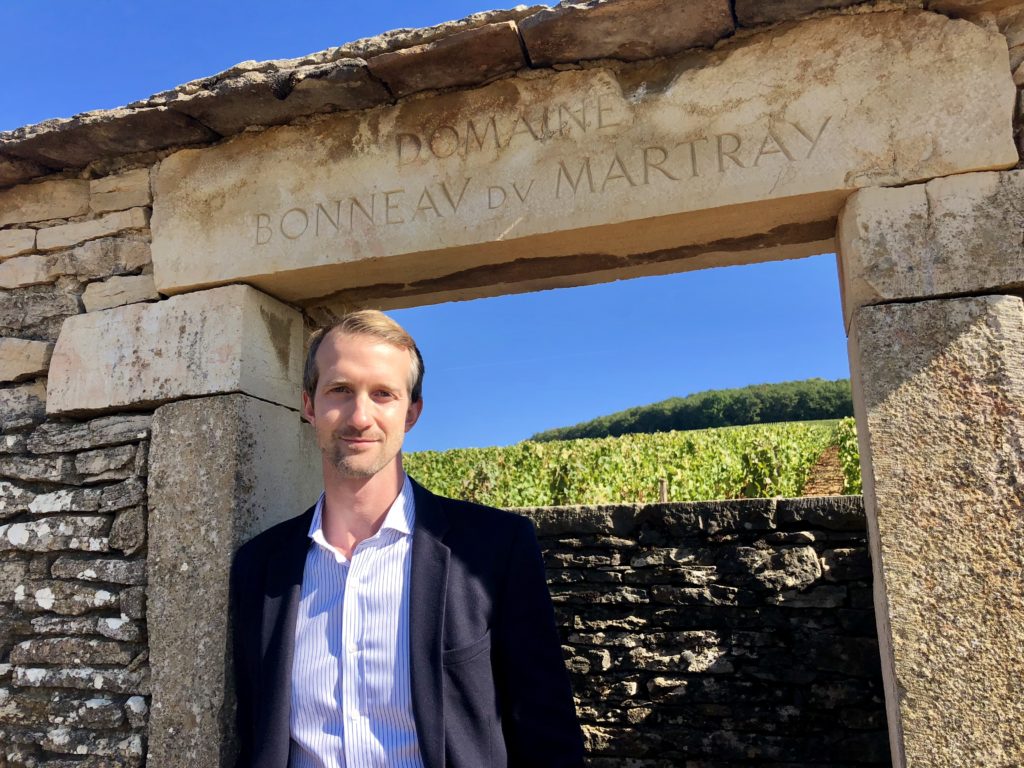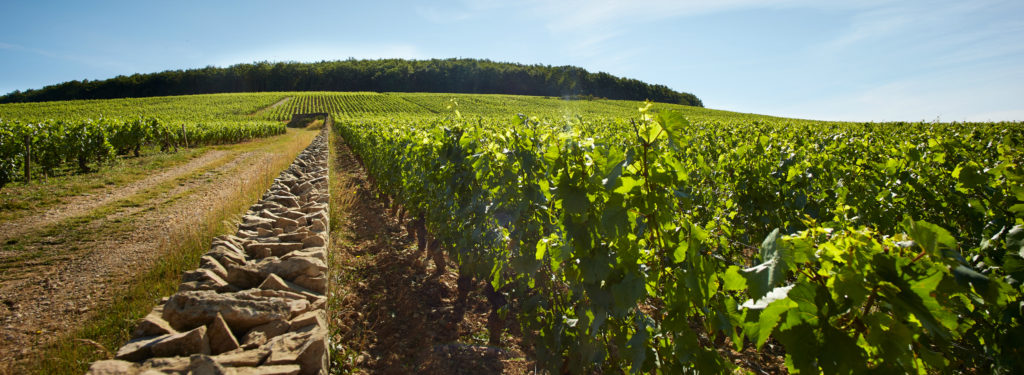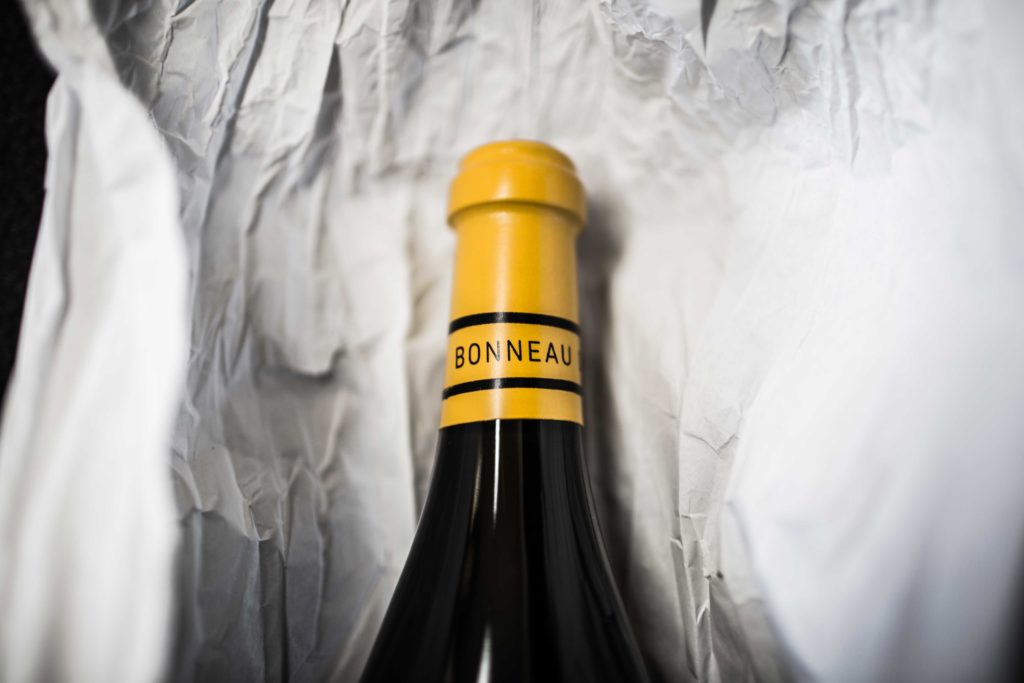Following the acquisition in January 2017 of Domaine Bonneau du Martray by US businessman Stanley Kroenke, the dynamic new management team comprises Armand de Maigret and Thibault Jacquet, previously of Laurent-Perrier in Asia.
In addition to Bonneau du Martray, Armand de Maigret oversees Mr Kroenke’s Californian estates, which include Screaming Eagle, Jonata and The Hilt. Thibault Jacquet is based at the domaine and importantly, the core technical team remains unchanged under the new ownership. Fabien Esthor has been vineyard manager since 2003 and Emmanuel Hautus winemaker since 2011.
It was announced in May 2018 that 2.8 hectares of the estate’s 9.5 hectares of Corton-Charlemagne were to be leased to Domaine de la Romanée-Conti. This move –surely an excellent one for both domaines – took effect from November 2018 and means that as of the 2019 vintage, Bonneau du Martray’s production of Corton-Charlemagne will be reduced by 25-30%. Both estates are biodynamic and both are managed impeccably, in the case of Bonneau du Martray thanks to the legacy of long-time owner Jean- Charles le Bault de la Morinière.
Another development this year is that every bottle leaving the domaine will now have a chip embedded in its front label which can be scanned by smartphones in order to access information about it. This will be particularly relevant to authentication, as well as providing a wealth of technical detail and the date of release from the domaine’s cellars. Innovation is alive and well in Burgundy.

“In 2017, the sun shone on our vineyards again, offering us a superb Corton-Charlemagne”
Thibault Jacquet
History
Bonneau du Martray’s Corton-Charlemagne vineyard was gifted by the Emperor Charlemagne to the monks of Saulieu in 775, in compensation for the destruction of their Abbey by the Saracens.
The Church owned the property for just over a thousand years until the French Revolution, when it was acquired by René Bonneau du Martray’s family, descendants of Nicolas Rolin, who founded the Hospices de Beaune in 1443. In the 19th Century, the Bonneau du Martray family held almost 24 hectares of vines, including the entirety of the Charlemagne climat in the commune of Pernand.
René Bonneau du Martray, born in 1886, left the estate to his niece, Comtesse Alice le Bault de la Morinière, whose husband Jean took over in 1969. Jean began the estate’s renaissance, enlarging and improving the cuverie and cellars and introducing estate bottling.
The Vineyard
Corton-Charlemagne is the only west-facing grand cru in the Côte d’Or, meaning its vines enjoy extended exposure to the afternoon sun.
This unique aspect is accentuated by the heat-reflective white marl soil. The elevated plots allow for excellent drainage whilst cold humid air passes through the valley at the base of the slopes. The hilltop wood buffers the highest parcels from cold winds. These features make for an extremely varied patchwork, conferring complexity on the finished wines.
Bonneau du Martray’s vines lie in one contiguous plot at the heart of the Charlemagne climate, the appellation’s largest single holding at 11.09 hectares. Following the November 2018 lease to Domaine de la Romanée-Conti of 2.8 hectares of Corton-Charlemagne, the area in domaine production will be 6.7 hectares. However, the 2017 and 2018 vintages have been made from the entire 9.5 hectares, less four blocks which are currently being replanted. The Pinot Noir (Corton) plantings cover 1.59 hectares.

The hill of Corton, with its voluptuous slopes and generous woodland at its crest, some 300 metres above sea level, is composed of a bedrock of limestone, overlain by Jurassic soil. The parcels can be grouped into three larger sections, named after the families who tended them before Jean le Bault de la Morinière’s time. Each represents roughly a third of the holdings. The upper slopes are dominated by white marl, with the proportion of iron and clay increasing as you descend the slope.
The upper section, of around three hectares, is known as Rollin Haut. The soils here are poor, forming the “spine” of the wine, in Thibault Jacquet’s terminology. This adds mineral tension and acidity to the final blend. The midslope section is called Grande Plante – the “heart” of the wine, conferring a more generous, assertively fruited character. The lower slopes are known at the domaine as Les Latours. These, for Thibault, represent the “flesh” of the wine, contributing density and viscosity.
The lower section tends to be picked first, the upper section last. The 40-strong harvest team typically takes one week to bring in the domaine’s grapes. The three parcels are vinified separately, with sub-cuvées made if Emmanuel Hautus and team so decide. The average age of the vines is over 50 years, although this is set to change as the replanting programme advances. Yields are low, the average being 40 hectolitres per hectare (hl/ha) for the white and under 30 hl/ha for the red.
No herbicides or fertilisers are used and yields, whilst naturally controlled by the age of the vines, are further reduced by severe pruning in the early part of the growing season and by green harvesting when necessary. Following biodynamic trials on a third of the vineyard from 2005 to 2011, the whole estate was certified biodynamic 2016. The domaine’s biodynamic supplier is the renowned Pierre Mason.

Domaine Bonneau du Martray: 2017 Vintage
Thibault Jacquet spoke of “three different waves of pressure” in the 2017 season.
The first of these was a frost “reminiscent of the terrible 2016 spring”. This was countered with a spray based on the valerian plant, permitted by biodynamics, the domaine having received biodynamic certification in 2016. This created a cosseting environment around each tender shoot, protecting against the worst of the frost.The second obstacle was the heavy spring rain, which washed away these treatments almost as quickly as they could be applied, making for a constant battle in the vineyards. The final challenge was the summer heat and drought pressure, which again was combatted successfully using valerian spray, this time to protect the leaves and fruit.
The Pinot Noir was picked on 30th August. This proved well-timed, as the 31st was rainy. The hardier Chardonnay was then harvested from 1st to 5th September. 2017 was a vintage in which the Bonneau du Martray team had to be constantly alert: a challenge to which it rose spectacularly.
In the cellar, Emmanuel Hautus has been experimenting with a 17 hectolitre concrete conical tank, which he likes for the sense of energy it confers and with a concrete egg-shaped vessel, which gives a flintier, more ‘reductive’ aspect, due to the lees circulating inside the vessel.

